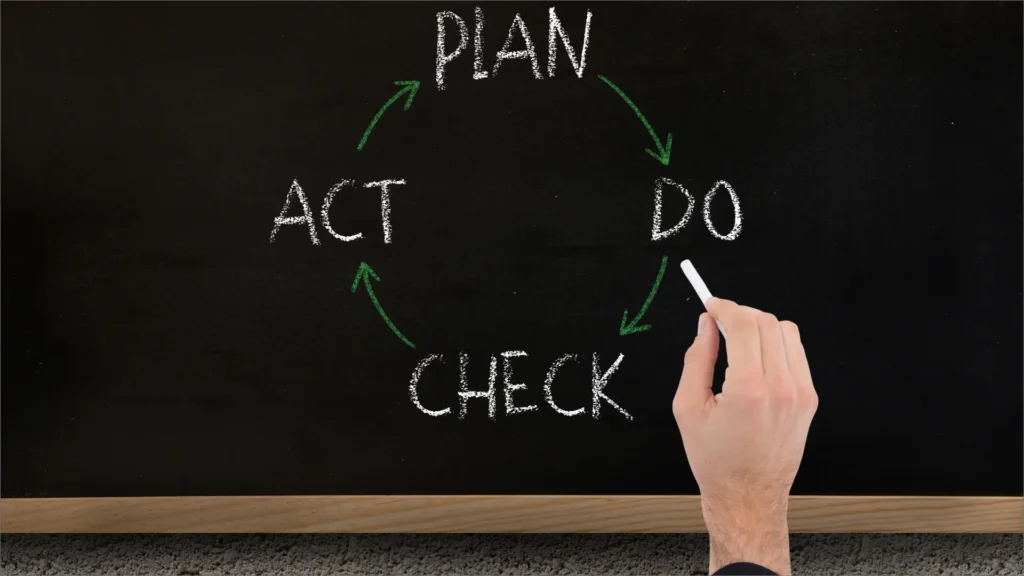
In-Depth Guide to the Rapid Planning Method

In today’s fast-moving world, being good at managing your time is more important than ever. With countless distractions, a constant influx of information, and the pressure to balance work, personal life, and health, many of us struggle to stay on top of our tasks and goals.
This challenge calls for a robust and adaptable approach to organizing our time and efforts. Enter the Rapid Planning Method (RPM), a transformative strategy designed to not only manage time but to also ensure that our actions are aligned with our deepest values and aspirations.
RPM stands out as a comprehensive solution, offering a unique combination of goal setting, prioritizing, and strategic planning, enabling individuals to turn their vision into reality with clarity and efficiency.
What is Rapid Planning Method?
Rapid Planning Method (RPM), often associated with Tony Robbins, a renowned life coach and self-help author, is a revolutionary approach to time management and productivity. Its development stems from the need to transcend traditional to-do lists and schedules that often lead to burnout and inefficiency. Instead, RPM focuses on aligning one’s daily actions with broader life goals and purposes, ensuring that every task undertaken is meaningful and impactful.
At the heart of RPM is a shift in mindset: from task-oriented to result-oriented planning. This method encourages individuals to think in terms of the results they want to achieve, rather than just the tasks they need to complete. This fundamental shift changes how one approaches their day, focusing on the end goal rather than just the means of getting there.
Components of the Rapid Planning Method

Rapid Planning Method (RPM) is built on three foundational components: Results, Purpose, and Massive Action Plan (MAP). These components work in tandem to create a powerful and effective planning method, ensuring that every action taken is purposeful and aligned with one’s overarching goals.
1. Results
This component is about defining what you want to achieve. It requires setting clear, specific, and tangible outcomes. Instead of focusing on the tasks, RPM shifts the focus to the end results. This approach helps in creating a vision of what success looks like, making it easier to stay motivated and directed towards achieving these objectives. It’s about knowing your destination before you begin the journey.
2. Purpose
Understanding the ‘why’ behind your goals is central to RPM. This component involves identifying the underlying reasons for wanting to achieve these results. Purpose serves as a powerful motivator, especially during challenging times. It provides the emotional drive and energy to push through obstacles and persist in pursuit of your goals. When you are clear about why something matters to you, your commitment and enthusiasm naturally increase.
3. Massive Action Plan (MAP)
This is the operational part of RPM, where you break down your desired results into actionable steps. The MAP involves strategizing and planning the specific actions, tasks, and resources needed to achieve the results. It’s about creating a roadmap with concrete steps, deadlines, and milestones. This practical component transforms your vision and purpose into a workable plan, ensuring that your goals are not just aspirational but achievable.
The interlinking of these components creates a dynamic and holistic approach to planning and time management. By starting with a clear vision of the results and understanding the driving purpose, your actions become more targeted and effective.
Step-by-Step Guide to Implementing RPM
Implementing the Rapid Planning Method (RPM) involves a structured approach that transforms your vision into reality. Here’s a step-by-step guide to effectively apply RPM in your life:
Step 1 : Setting Achievable and Specific Goals
- Begin by identifying what you want to accomplish. These should be clear, specific, and achievable goals.
- Use precise language to define your objectives. For example, instead of saying “I want to be healthier,” say “I want to lose 10 pounds in 3 months by exercising regularly and eating a balanced diet.”
- Ensure that your goals are realistic and time-bound, giving yourself a clear deadline to work towards.
Step 2 : Understanding the ‘Why’ Behind Your Goals
- After setting your goals, delve into why these goals are important to you. What is the driving force behind them?
- This step involves introspection. Your purpose might be personal growth, financial stability, health and well-being, or making a positive impact on others.
- Clearly articulating your purpose will provide the motivation and emotional drive to pursue your goals, especially when faced with challenges.
Step 3 : Breaking Down Goals into Actionable Steps
- With your goals and purpose in mind, the next step is to develop a Massive Action Plan. This is where you outline the specific actions you need to take to achieve your results.
- Break down each goal into smaller, manageable tasks. Assign realistic timeframes and deadlines for each task.
- Arrange these tasks by considering both their significance and immediacy. Identify any resources, skills, or support you might need.
- Keep your action plan flexible and be prepared to make adjustments as needed. Regularly review and track your progress, celebrating small successes along the way.
- Implementing RPM effectively requires commitment and consistency. Success involves not only strategizing but also putting plans into motion.
Maximizing the Effectiveness of RPM
To get the most out of the Rapid Planning Method (RPM), it’s essential to be aware of common pitfalls and to employ strategies that keep you motivated and on track.
Here are some tips and tricks to maximize the effectiveness of RPM:
Common Pitfalls to Avoid When Using RPM:
Overly Ambitious Goals: Setting unrealistic or too many goals can lead to overwhelm and burnout. It’s important to set achievable goals and focus on a few key objectives at a time.
Vague Planning: Avoid vague plans. Be specific about what you want to achieve and the steps needed to get there. Clear and detailed planning is crucial for success.
Lack of Flexibility: While it’s important to have a structured plan, be open to adjustments. In the face of life’s uncertainties, a resilient plan that can gracefully adapt to changes is essential.
Neglecting the Purpose: Forgetting the ‘why’ behind your goals can lead to a loss of motivation. Regularly remind yourself of the reasons behind your pursuits.
Inconsistent Review: Failing to regularly review and adjust your plan can derail your progress. Schedule consistent check-ins to assess and update your goals and plans
Tips for Staying Motivated and on Track with Your Goals

Here are the best tips to stay motivated and on track with your goals :
Set Realistic Milestones: Break your goals into smaller, achievable milestones. Celebrate these milestones to keep up your motivation.
Visualize Success: Regularly visualize the outcome of achieving your goals. This mental exercise can boost motivation and clarity.
Keep Your Purpose in Sight: Continuously remind yourself of why your goals matter. This emotional connection can provide the drive to keep going, especially during challenging times.
Create Accountability: Share your goals with a friend, family member, or a coach. Having someone to hold you accountable can significantly increase your commitment and likelihood of success.
Maintain a Positive Attitude: Stay positive and resilient. Challenges and setbacks are part of the journey. Learn from them and use them as opportunities for growth.
Use Rewards: Set up a rewards system for yourself. Reward yourself when you reach a milestone or stick to your plan, as this can reinforce positive behavior.
Review and Reflect Regularly: Regularly review your progress towards your goals. Reflect on what’s working and what’s not, and make adjustments as needed.
By being mindful of these pitfalls and adopting these motivational strategies, you can effectively use RPM to achieve your goals and enhance your overall productivity and life satisfaction.
Final Words - Rapid Planning Method
The Rapid Planning Method (RPM) offers a powerful approach to time management and goal achievement, emphasizing the importance of aligning actions with meaningful objectives. By focusing on results, understanding the underlying purpose, and creating a detailed Massive Action Plan, RPM transforms the way we approach our goals, making them more attainable and fulfilling.
This method not only enhances productivity but also ensures that our efforts are purpose-driven and aligned with our values. Adopting RPM in daily life can lead to significant improvements in how we manage our time, prioritize tasks, and ultimately, how we realize our aspirations.
Whether for personal, professional, or academic purposes, the RPM stands as a testament to the power of strategic planning and the importance of aligning our actions with our deepest goals and motivations.
Read More : How Can Google Ads Help You Advance Your Business Goals?
Read More : What Does ISO Mean On Facebook?
Author



